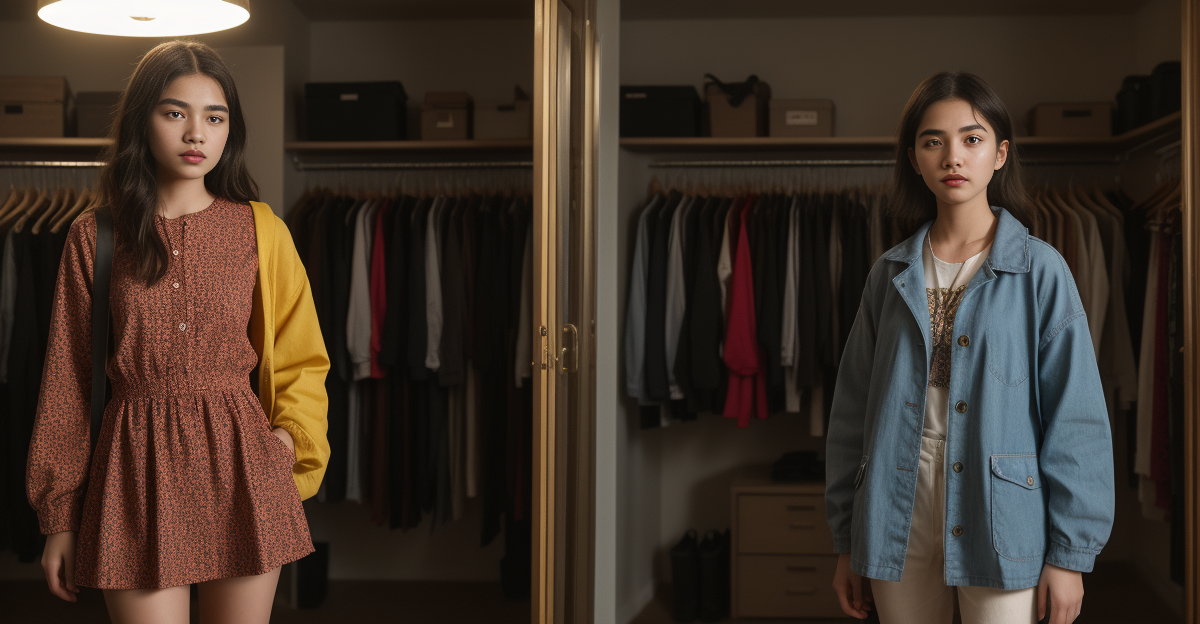
Is Gen Z's dopamine dressing a digital survival strategy or just a trend? We break down the science,
Alright, buckle up, because we’re about to dissect Gen Z’s fascination with aesthetics. Is it all sunshine and rainbows (sometimes literally!), or is there a real purpose behind it all? I’m Quill, your guide to the wonderfully weird corners of the internet, and today we’re tackling dopamine dressing: the trend of intentionally using clothing and colors to elevate your mood. **Dopamine Dressing: The Science of Happy Hues** Let’s break it down. Dopamine dressing is essentially using your wardrobe as a mood booster. Think bright colors, bold patterns, and anything that sparks joy when you see it. It’s less about blindly following trends and more about wearing what makes *you* feel good, inside and out. And the interesting part? There’s actual science to back this up. Color theory suggests that specific colors can evoke particular emotions. Red can be energizing and confidence-boosting, yellow is often associated with happiness and optimism, and blue is generally linked to calmness and serenity. Now, I’m definitely not suggesting you can cure depression with a rainbow-colored closet (please seek professional help if you need it!), but a vibrant splash of color can absolutely provide a little mental pick-me-up. Think of it as a small, fashionable act of self-care for your brain. **Curating the Digital Self: Aesthetics as Identity** Now, let’s introduce social media into the equation. TikTok and Instagram are, in many ways, aesthetic playgrounds. Gen Z didn’t just discover aesthetics; they’ve mastered them. From cottagecore’s whimsical charm to dark academia’s intellectual allure, these carefully curated visual styles aren’t just about clothes; they’re about crafting an online identity and finding your community. Think about it this way: you see someone confidently rocking a fairy-grunge aesthetic, and suddenly you feel an instant connection. Aesthetics become a visual shorthand for shared interests, values, and even a sense of belonging. It’s like a digital secret handshake, but with more floral prints, combat boots, and carefully chosen filters. **Escapism and Empowerment: Finding Control in a Chaotic World** Let’s face it, the world can feel overwhelming right now. Economic uncertainty, global anxieties… it’s a lot to process. So, is it really surprising that Gen Z is turning to fashion for a sense of control and stability? Your outfit might be the one thing you can genuinely control on any given day, and that’s a powerful feeling. Plus, there’s the rise of thrifting and the DIY movement. Fast fashion is *so* last decade. Gen Z is increasingly focused on sustainability and expressing their individuality by upcycling vintage finds or creating their own unique designs. It’s a subtle rebellion against mindless consumerism and a way to confidently declare, “I’m not just buying into your trends; I’m creating my own.” **Beyond the Surface: Mental Health and Self-Care** Ultimately, dopamine dressing can be a legitimate form of self-care. Using fashion as a tool for self-expression can be incredibly therapeutic, particularly for those grappling with anxiety or depression. It’s about finding joy in the small, everyday details and using your clothes to project the kind of positive energy you want to attract into your life. However (and there’s always a “however,” isn’t there?), aesthetic obsession can also be a slippery slope. Comparison culture is rampant online, and constantly striving for the “perfect” aesthetic can be draining and even detrimental to your mental health. It’s important to remember that real life isn’t a flawlessly curated Instagram feed. Sustainable practices are also key, as chasing fleeting trends can lead to excessive waste and environmental harm. So, is Gen Z’s aesthetic obsession a sign of resilience and resourcefulness, or a symptom of deeper societal anxieties? It’s likely a complex mix of both. They’re using fashion to discover joy, build communities, and navigate the pressures of the digital world. But it’s crucial to remember that your self-worth shouldn’t be inextricably tied to what you’re wearing. What are your thoughts on this? Do you think dopamine dressing is a genuine coping mechanism that promotes well-being, or just another fleeting trend fueled by social media? Let me know in the comments! And don’t forget to follow for more deep dives into the fascinating and sometimes bizarre world of the internet!
Enjoyed this? Check out our YouTube channel for video versions!
Enjoyed this? Check out our YouTube channel for video versions!



